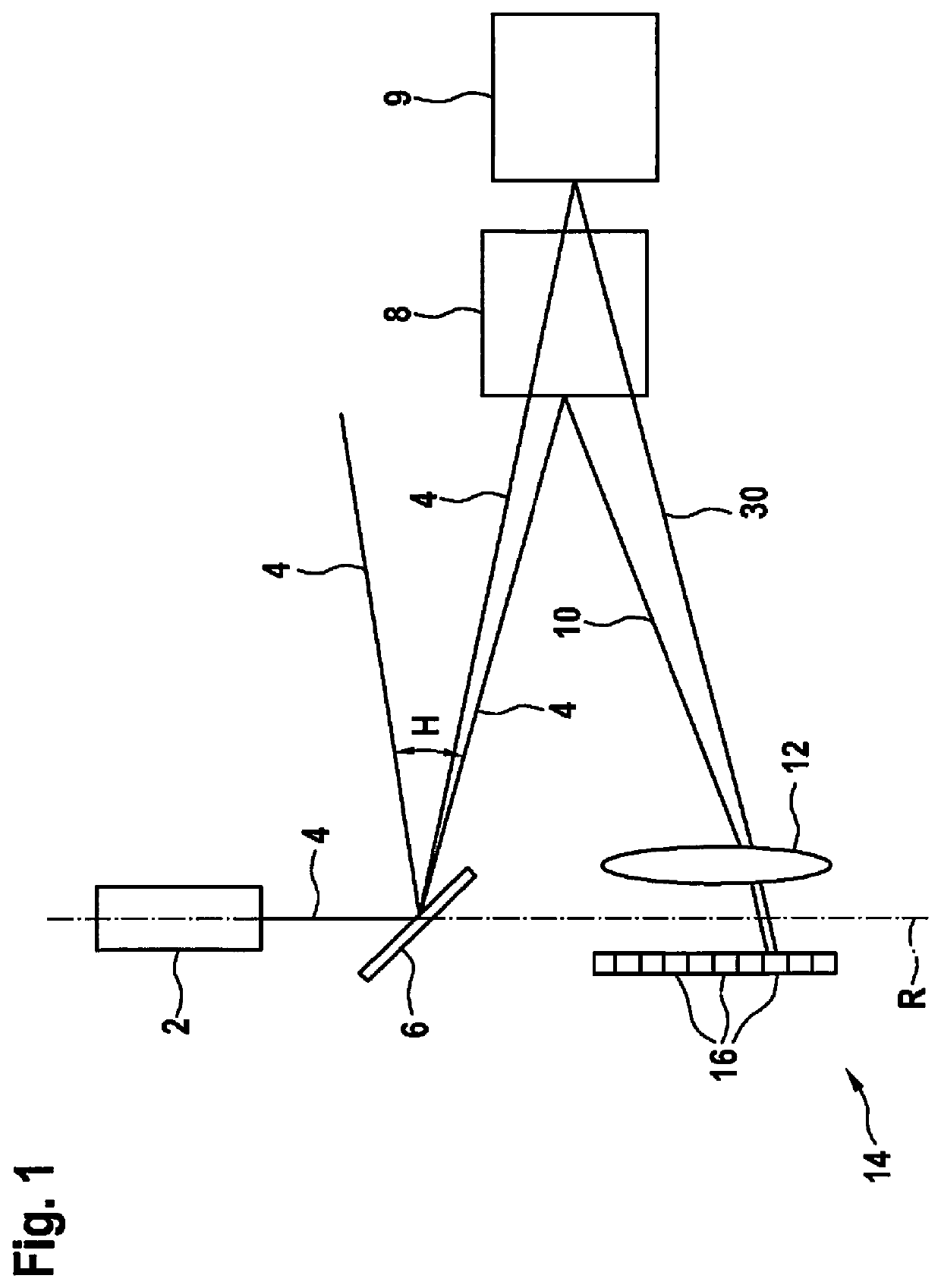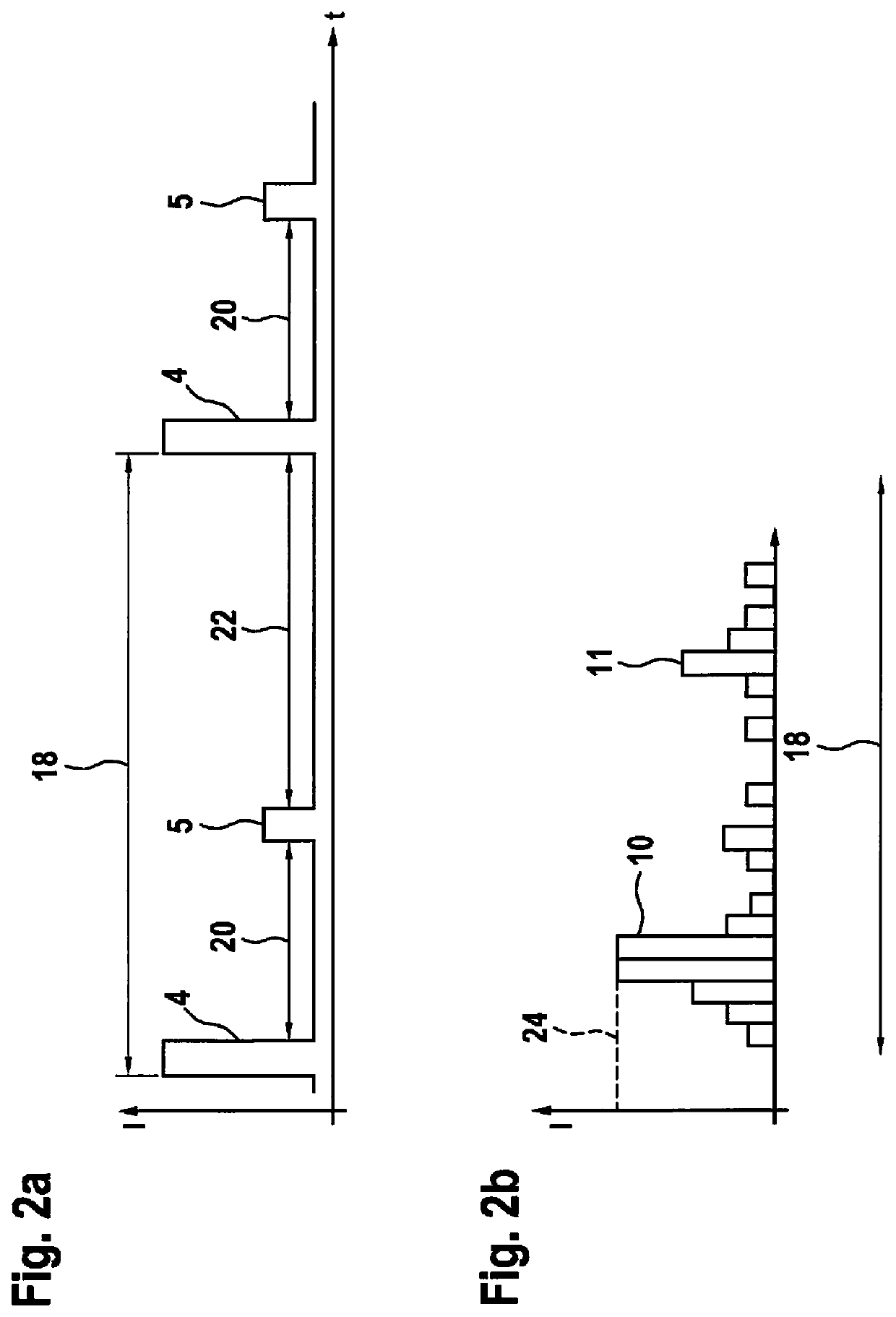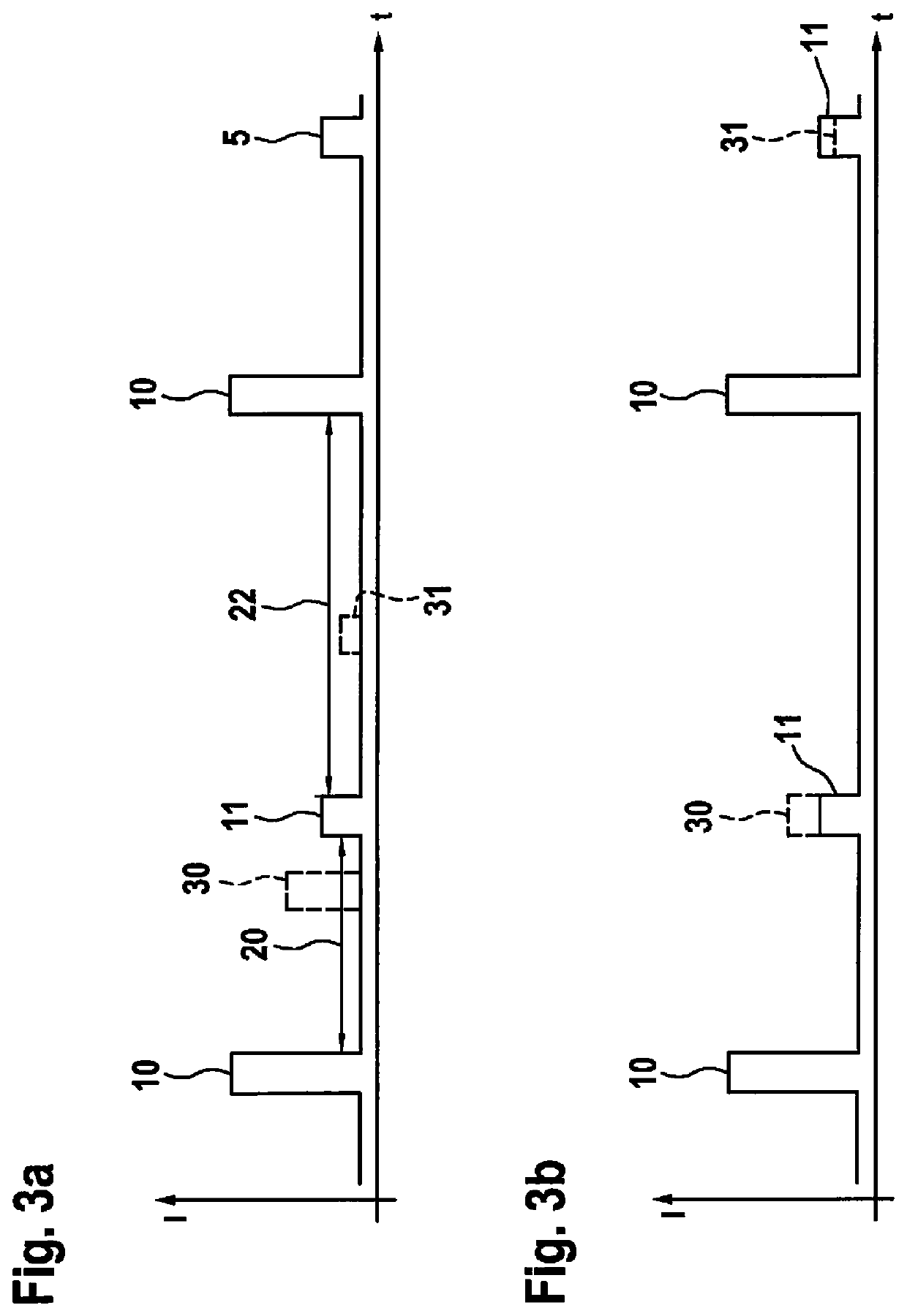Method and device for scanning a solid angle
a solid angle and scanning technology, applied in the direction of surveying, navigation, distance measurement, etc., can solve the problems of evaluating further measured quantities based on the pulse shape of the beam like, the shape of the reception pulse may become distorted, and the detection of rapid saturation
- Summary
- Abstract
- Description
- Claims
- Application Information
AI Technical Summary
Benefits of technology
Problems solved by technology
Method used
Image
Examples
Embodiment Construction
[0025]In the figures, the same structural elements in each case have the same reference numerals.
[0026]FIG. 1 shows a first exemplary embodiment of a LIDAR device 1. LIDAR device 1 has a beam source 2 for generating at least one electromagnetic beam 4. Beam source 2 according to the example is a laser 2 which generates beams 4 in a pulse shape. According to the exemplary embodiment, laser 2 is used to generate a beam 4 with a wavelength in the non-visible infrared range. For instance, the wavelength may be greater than 800 nm. Beam 4 generated by laser 2 is deflected by a deflection unit 6 or a rotatable mirror 6. In this case, mirror 6 is pivotable along an axis of rotation R. Thus, mirror 6 is able to deflect generated beam 4 along a defined scan angle H. In addition, mirror 6 is pivotable orthogonally to horizontal scan angle H, and therefore covers a vertical scan angle V. Consequently, LIDAR device 1 is able to scan a solid angle W=V×H and locate possible objects 8, 9 positione...
PUM
 Login to View More
Login to View More Abstract
Description
Claims
Application Information
 Login to View More
Login to View More - R&D
- Intellectual Property
- Life Sciences
- Materials
- Tech Scout
- Unparalleled Data Quality
- Higher Quality Content
- 60% Fewer Hallucinations
Browse by: Latest US Patents, China's latest patents, Technical Efficacy Thesaurus, Application Domain, Technology Topic, Popular Technical Reports.
© 2025 PatSnap. All rights reserved.Legal|Privacy policy|Modern Slavery Act Transparency Statement|Sitemap|About US| Contact US: help@patsnap.com



